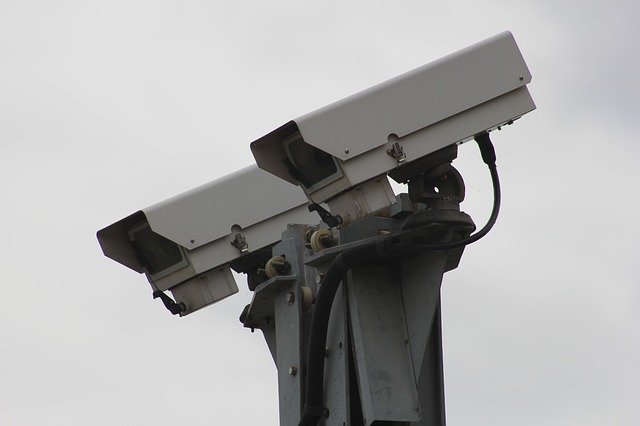CCTV consultant Simon Lambert has challenged those who believe analogue surveillance cameras are ill-suited to the digital age and should be replaced as soon as is financially feasible.
Lambert, an occasional IFSEC Global contributor whose recent story about CCTV settings is September’s most read article, felt “driven to reply” to a recent article on this site called Social Housing, CCTV and Cloud Storage: Challenging the Myths About IP Video Surveillance.
The feature, which was penned by NSPR technology writer Caroline Bullock, argued that a “new breed of cameras are better equipped than ever to remedy some of the long-standing cost and efficiency issues that have blighted the performance of their analogue counterparts.” In the social housing sector, she wrote, “loyalty to the traditional systems has long prevailed, largely down to that mantra of ‘better the devil you know’.”
But Lambert, an engineer with 27 years’ experience in commercial, military and security systems design, believes the debate surrounding CCTV systems shouldn’t be framed around a simplistic, binary, analogue versus IP choice. Responding ‘below the line’ in the comments section, he wrote: “Anyone who is concerned about the difference between ‘digital’ and ‘analogue’ is wasting their energy. Use the most appropriate to meet your purposes.
“Don’t worry what others are doing. They might be idiots who are easily misled.”
Bullock said the Hatton Garden raid exposed analogue equipment’s “susceptibility to tampering and vandalism with thieves disabling the camera and removing the hard drives containing footage from an on-premises digital video recorder.
“A cloud-based alternative with capabilities for remote monitoring would have rendered such a move impossible with real-time footage stored and secured in a remote data centre. Furthermore, the required imagery would have been available to the police within minutes rather than almost a week after the incident as happened in this case.”
Connectivity issues
If even our fridge is destined to go online, then surely the CCTV camera will too? But as anyone who lives in the surprisingly numerous areas with appallingly slow broadband speeds can attest, the internet of things is often hobbled by connectivity issues.
“I have yet to have explained to me by cloud proponents how anything but a hugely fast ‘up-link’ (thereby expensive and fallible) from their client’s premises can give high-quality, real-time footage from many cameras. Video compression is the quality killer.”
And of course analogue cameras – counter-intuitively perhaps – does not preclude digital recording.
“Pretty much all analogue CCTV has been recorded digitally for years now,” continues Lambert. “So, it could easily be connected to the internet for ‘monitoring the bins’. Maybe people who appear to be ‘firmly attached to their analogue counterparts’ are the ones not easily hoodwinked. They know that, in reality, IP cameras are clearly not essential if you want remote viewing.”
Citing a report by Housing Technology magazine and Cloudview Bullock wrote that “the costly installation and low quality recorded footage of the traditional analogue systems along with their tendency to be vandalised are simply no longer fit for purpose in an era of the internet of things, IP-enabled devices and the increasingly omnipresent smartphone and tablet.”
But Lambert, who is Technical Lead on the CCTV National Standards Forum and sits on the British Standards Institution CCTV committee, posed the question: “If analogue cameras have a ‘tendency to be vandalised’, what makes digital cameras immune?”
Bullock cited the case study of “national housing provider the Accent Group, which has recently begun to use Cloudview [a cloud-based service whose founder we interviewed last year] and has plans to roll out the system across all of its key sites.
“Prior to switching to the cloud-based solution and in common with many of their peers, their deployed surveillance comprised little more than a jumbled assortment of incompatible cameras. Footage was recorded onto local hard drives which once downloaded was often too poor quality to use as hard evidence.
“Furthermore, a contractor would have to be called out at around £100 a time to retrieve the footage, which in turn incurs additional costs when every penny counts. Using a single visual surveillance solution which is easier to install and manage across Accent’s multiple sites ensures authorised users have quick and easy access to high quality footage whenever they want.”
“Poor buying decisions”
But Lambert suggests that analogue systems are not always and inevitably a hotchpotch arrangement. “Why did anyone have a ‘jumbled assortment of incompatible cameras’ except through making their own poor buying decisions? Analogue’s 1Vpp signal has always been far more universal than the proprietary streams created by different makes of IP camera. ONVIF? Don’t be fooled by that.
“Poor footage comes from sloppy design, installation and maintenance. IP CCTV installers are no less prone to this than analogue installers.
“Paying a contractor £100 to come and retrieve footage shows a lamentable lack of training for the owner. This has absolutely nothing to do with the analogue versus digital debate. Better organised owners can do it for themselves at zero charge.
Lambert believes that cloud storage is has more flaws than its proponents will admit. “Cloud operators will likely make owners pay for footage export too. Wherever they hide it, they’re not voluntary services are they?”
“Why is a cloud-based system easier to install? With the vulnerability and third-party telco issues of a connection to the internet, I would suspect that it is not less complex than a standalone solution.”
Free Download: The Video Surveillance Report 2023
Discover the latest developments in the rapidly-evolving video surveillance sector by downloading the 2023 Video Surveillance Report. Over 500 responses to our survey, which come from integrators to consultants and heads of security, inform our analysis of the latest trends including AI, the state of the video surveillance market, uptake of the cloud, and the wider economic and geopolitical events impacting the sector!
Download for FREE to discover top industry insight around the latest innovations in video surveillance systems.

